Previous Day - Next Day
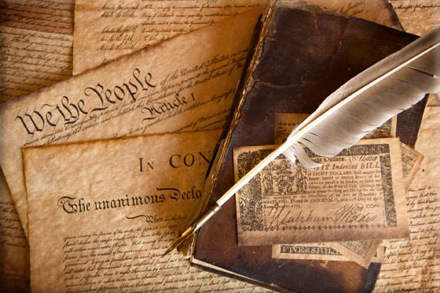
“We hold these truths to be self-evident, that all men are created equal, that they are endowed by their Creator with certain inalienable Rights, that among these are Life, Liberty and the pursuit of Happiness.”
~ United States Declaration of Independence
Wikiquote (United States Declaration of Independence is a statement adopted by the Continental Congress on July 4, 1776, which announced that the thirteen American colonies, then at war with Great Britain, regarded themselves as independent states, and no longer a part of the British Empire.)
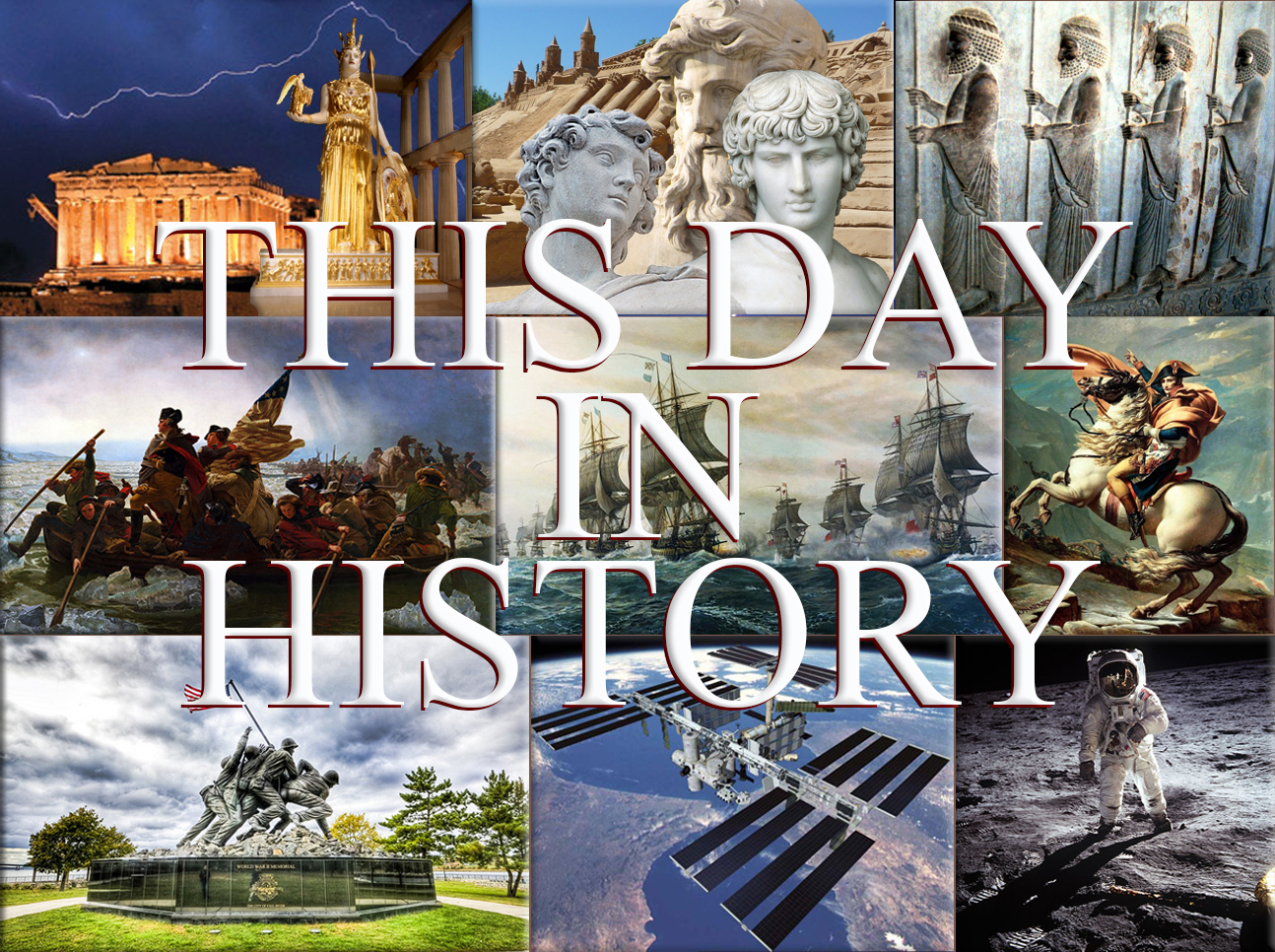
July 4th, 414

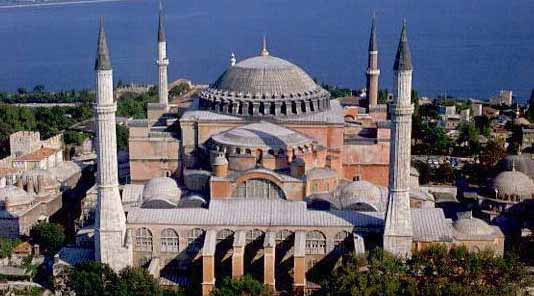
Byzantine Empire (East Roman Empire):
414 - Emperor Theodosius II, age 13, yields power to his older sister Aelia Pulcheria who reigns as regent and proclaimed herself empress (Augusta) of the Eastern Roman Empire.
Wikipedia Image: The Baptism of Constantine painted by Raphael's pupils (1520–1524, fresco, Vatican City, Apostolic Palace); Mural of Saints Cyril and Methodius, 19th century, Troyan Monastery, Bulgaria; Justinian I depicted on one of the famous mosaics of the Basilica of San Vitale, Ravenna; The Greek fire was first used by the Byzantine Navy during the Byzantine-Arab Wars (from the Madrid Skylitzes, Biblioteca Nacional de España, Madrid); Alexios I, founder of the Komnenos dynasty.
Photo: Byzantine Empire is the great church of Hagia Sophia (Church of the Holy Wisdom) in Constantinople (562).
July 4th, 1054
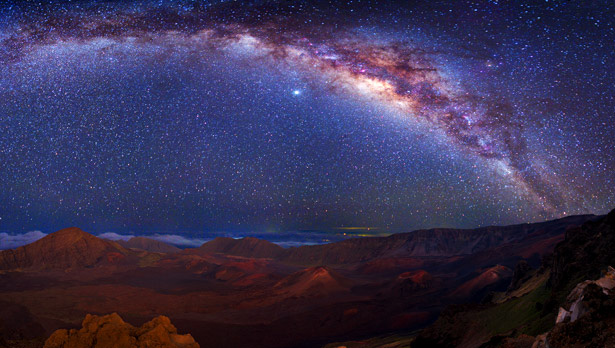
A supernova is seen by Chinese, Arab, and possibly Amerindian observers near the star Zeta Tauri. For several months it remains bright enough to be seen during the day. Its remnants form the Crab Nebula.
Wikipedia Image: Milky Way Galaxy, National Geographic
July 4th, 1187

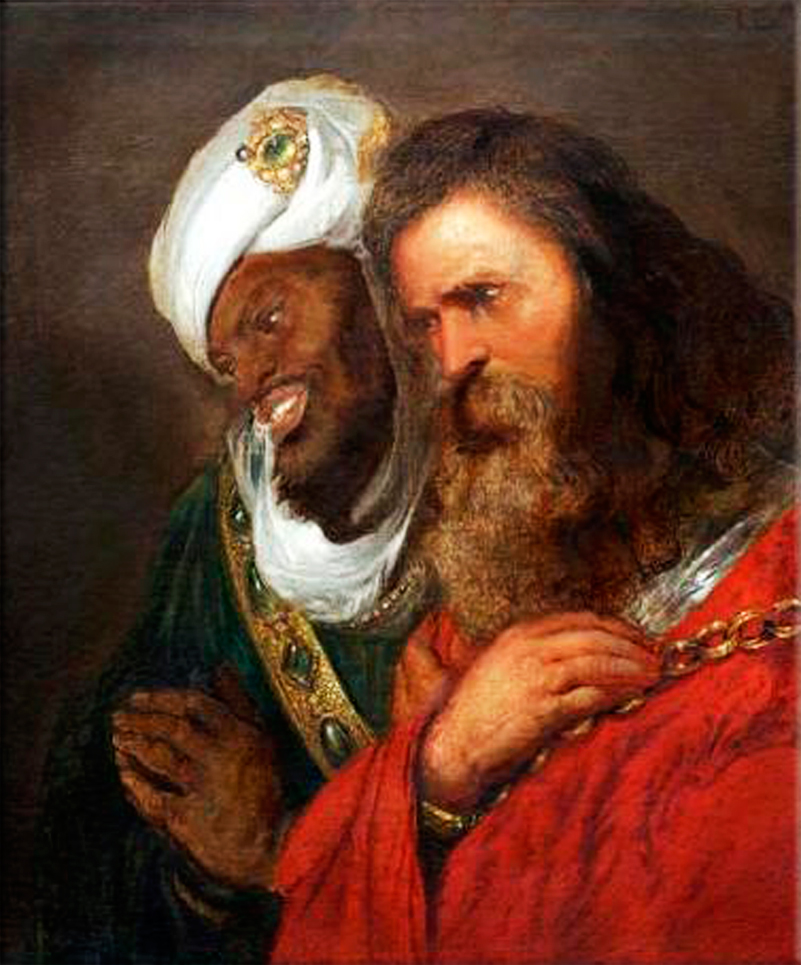
Crusades:
1187 - Battle of Hattin: Saladin defeats Guy of Lusignan, King of Jerusalem.
Wikipedia Image: The Siege of Antioch, from a 15th-century miniature; After the successful siege of Jerusalem in 1099, Godfrey of Bouillon, leader of the First Crusade, became the first ruler of the Kingdom of Jerusalem; Baldwin I of Jerusalem; Medieval image of Peter the Hermit, leading knights, soldiers and women toward Jerusalem during the First Crusade; The Battle of Ager Sanguinis, 1337 miniature; Pope Innocent III excommunicating the Albigensians, Massacre against the Albigensians by the crusaders; The capture of Jerusalem marked the First Crusade's success.
Third Crusade; depicting Saladin (1138 - 1193) holding Guy of Lusignan (1150 - 1194) captive in golden chains after the battle of Hattin in 1187. Guy of Lusignan is depicted wearing (Christian) royal red cloathes and Saladin is depicted wearing (Islamic) royal green cloathes, by Jan Lievens (1607-1674).
July 4th, 1456

Ottoman Empire (Turkish Empire or Turkey), Ottoman wars in Europe:
1456 - Siege of Nándorfehérvár (Belgrade).
Wikipedia Image: Ottoman Empire Maximal extent with the vassal states of the Ottoman Empire in AD 1590s; Battle of Kosovo (1389); Fall of Constantinople (1453); Sultan Mehmed I Ottoman miniature, 1413-1421; Fall of Constantinople (1453); Siege of Rhodes (1522); Battle of Kosovo (1389); Battle of Mohács (1526).
July 4th, 1610
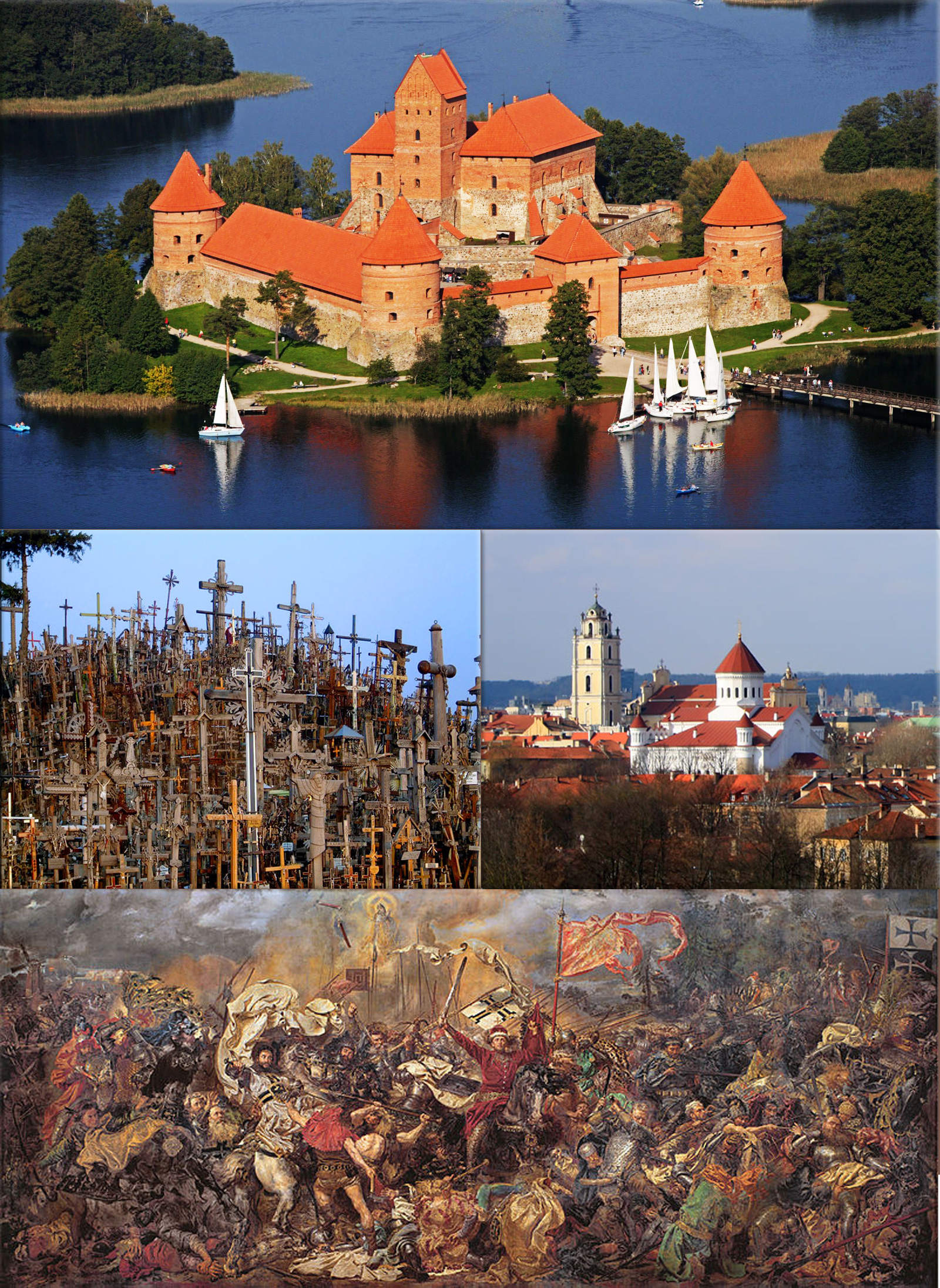
Polish-Muscovite War, Battle of Klushino: The Polish–Lithuanian Commonwealth secured a decisive victory over Russia.
Wikipedia Image: Lithuania (Republic of Lithuania) is a country in Northern Europe, the largest of the three Baltic states. ● Trakai Island Castle Photo: ● Hill of Crosses (more than 50,000 crosses, not a cemetery) ● Vilnius ● Battle of Grunwald and Vytautas the Great in the centre.
July 4th, 1744

Treaty of Lancaster: the Iroquois ceded lands between the Allegheny Mountains and the Ohio River to the British colonies, is signed in Lancaster, Pennsylvania.
Wikipedia Painting: Treaty of Lancaster
July 4th, 1754
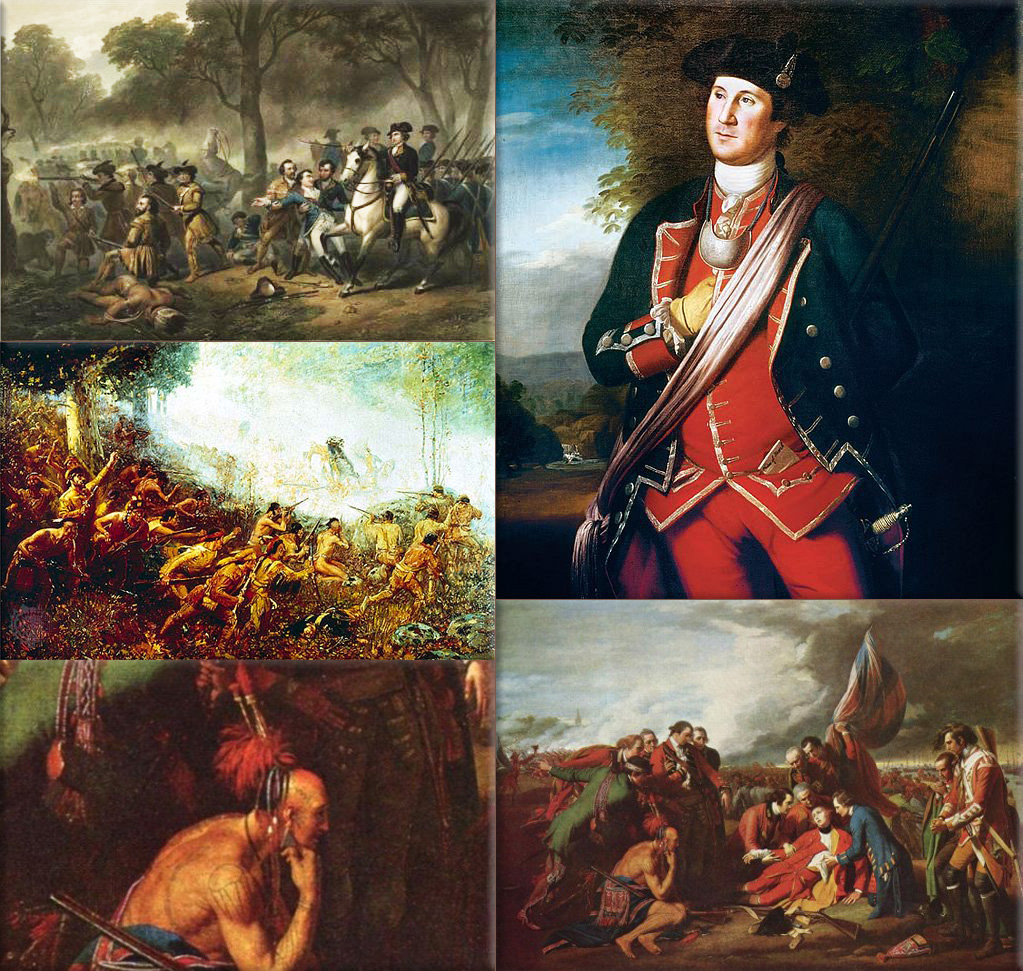
French and Indian War: George Washington surrenders Fort Necessity to French Captain Louis Coulon de Villiers.
Wikipedia Painting: Major Washington and a wounded General Braddock at the Battle of Monongahela. Lemercier, 1854; Portrait of Washington was painted in 1772 by Charles Willson Peale, and shows Washington in uniform as a colonel of the Virginia Regiment. The original hangs in Lee Chapel at Washington and Lee University in Lexington, Virginia. It is the earliest known depiction of Washington; British troops under Edward Braddock near Fort Duquesne, Pa., during the French and Indian War. Credit: MPI / Hulton Archive / Getty Images; Indian from Death of General Wolfe painting By Benjamin West in 1770; Death of General James Wolfe by stray cannon shot at Battle of Quebec in 1759 Painted by Benjamin West in 1770.
July 4th, 1776
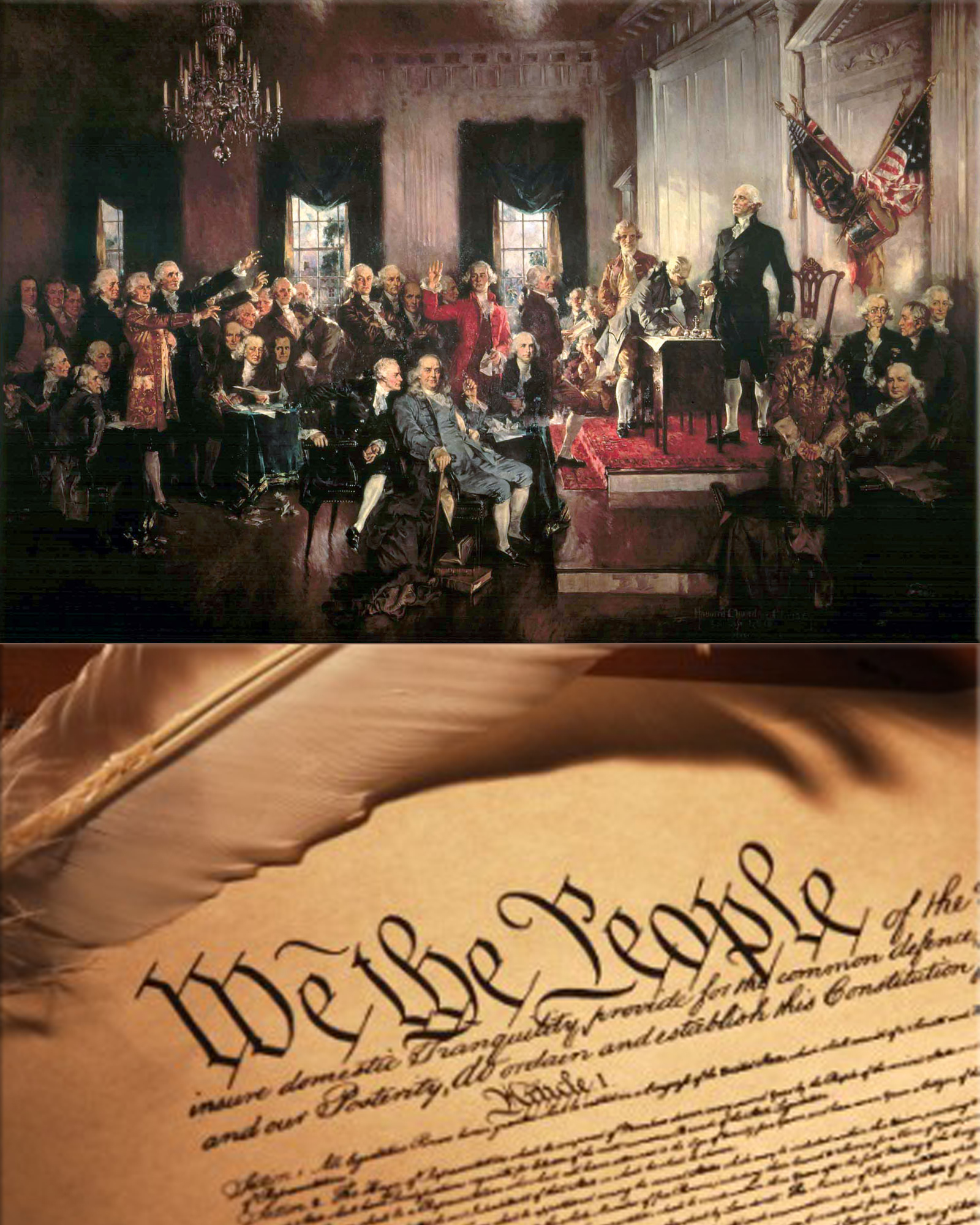
1776 - The United States Declaration of Independence is adopted by the Second Continental Congress.
Wikipedia Painting: Scene at the Signing of the Constitution of the United States, by Howard Chandler Christy
July 4th, 1778
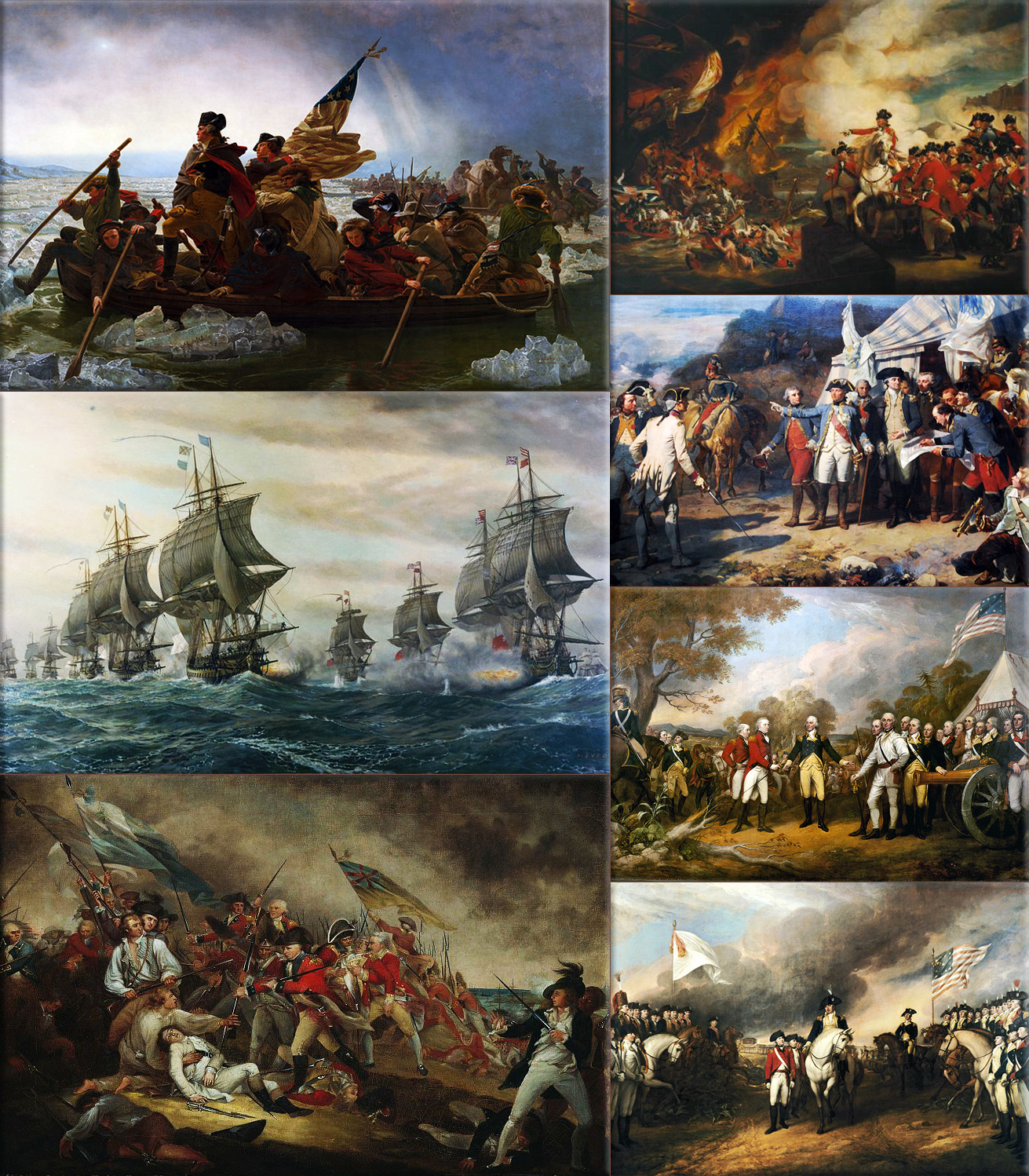
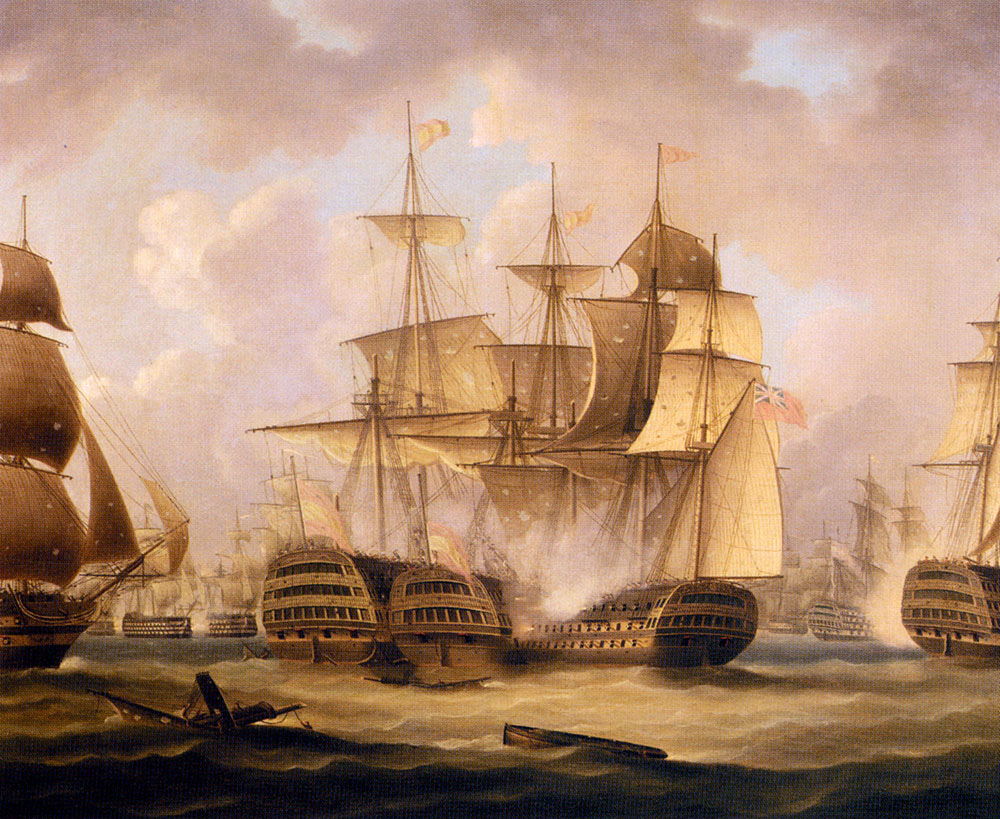
American Revolutionary War:
1778 - Illinois Campaign; American forces under George Clark capture Kaskaskia.
Wikipedia Paintings: Washington Crossing the Delaware, by Emanuel Leutz; Battle of the Chesapeake, French (left) and British (right) lines; Battle of Bunker Hill, The Death of General Warren at the Battle of Bunker Hill by John Trumbull; The Defeat of the Floating Batteries at Gibraltar, September 13, 1782, by John Singleton Copley; Washington and the Comte de Rochambeau at Yorktown, 1781; "The surrender at Saratoga" shows General Daniel Morgan in front of a French de Vallière 4-pounder; Surrender of Cornwallis at Yorktown by (John Trumbull, 1797).
● Battle of Cape Saint Vincent, by Thomas Buttersworth (1768-1842).
July 4th, 1802

United States Military Academy
1802 - West Point, New York the United States Military Academy opens.
Wikipedia Image: West Point from Phillipstown. engraving by W. J. Bennett showing the original buildings of the United States Military Academy ● United States Military Academy Central campus looking north ● Cadet Chapel.
July 4th, 1803

The Louisiana Purchase, is announced to the American people.
Wikipedia Painting: President Thomas Jefferson completed the Louisiana Purchase in 1803, buying more than 800,000 square miles from France. (Gilbert Stuart's Portrait of Thomas Jefferson 1805-1807, Bowdoin College Museum of Art, Brunswick, Maine); Ceremony at Place d'Armes, New Orleans marking transfer of Louisiana to the United States, 10 March 1804, as depicted by Thure de Thulstrup.; Louisiana Purchase Map National Historic Trails © 2012 by Karen Carr and Karen Carr Studio, Inc.
July 4th, 1817
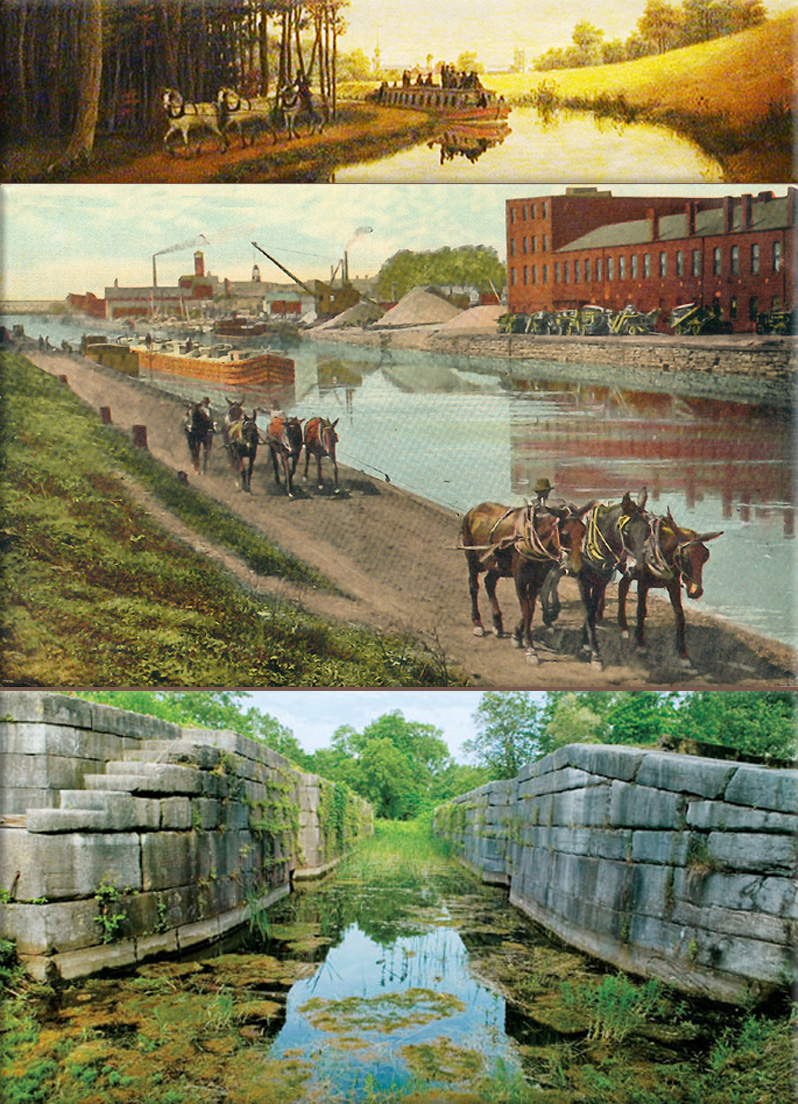
Rome, New York, United States construction on the Erie Canal begins.
Wikipedia Painting: Erie Canal - George Harvey: Pittsford on the Erie Canal, 1837 courtesy: Memorial Art Gallery of the University of Rochester ● "Along the Erie Canal, Buffalo, N.Y." (No. M 71, Buffalo News Co., Buffalo, N.Y.) - Postcard; not postmarked; approximately 1908 ● Lock 16 hand cut limestone of the original Erie Canal preserved Saint St Johnsville New York on the Mohawk River.
July 4th, 1826

Thomas Jefferson, third president of the United States, dies the same day as John Adams, second president of the United States, on the fiftieth anniversary of the adoption of the United States Declaration of Independence.
Wikipedia Painting: John Adams 2nd President of the United States and Thomas Jefferson 3rd President of the United States.
July 4th, 1827
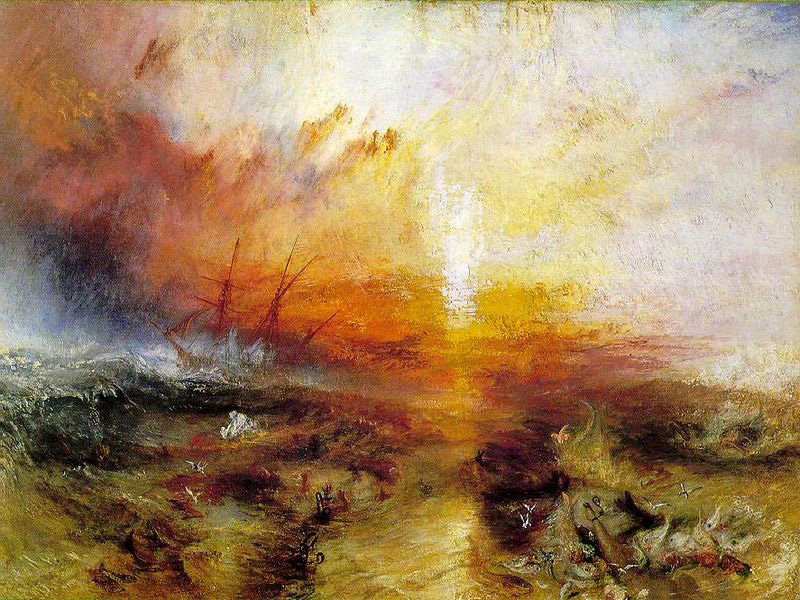
Slavery is abolished in New York State.
Wikipedia Painting: The Slave Ship, J. M. W. Turner's representation of the mass-murder of slaves, inspired by the Zong Massacre.
July 4th, 1831
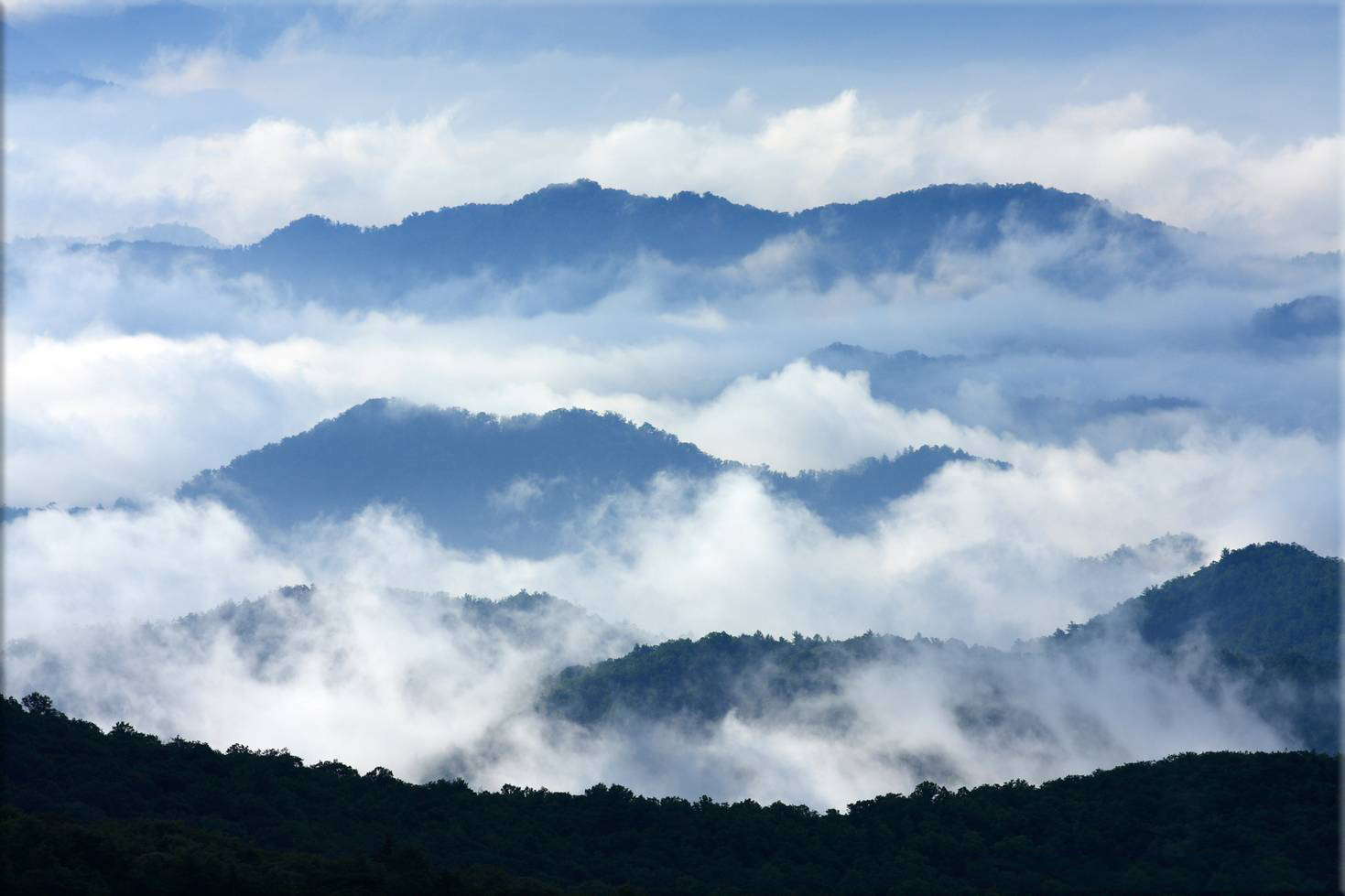
Samuel Francis Smith wrote My Country, 'Tis of Thee' for the Boston, Massachusetts July 4th festivities.
Wikipedia Samuel Francis Smith wrote My Country, 'Tis of Thee', 1831 - Blue Ridge Mountains, © John Kuhn Jr.
July 4th, 1837
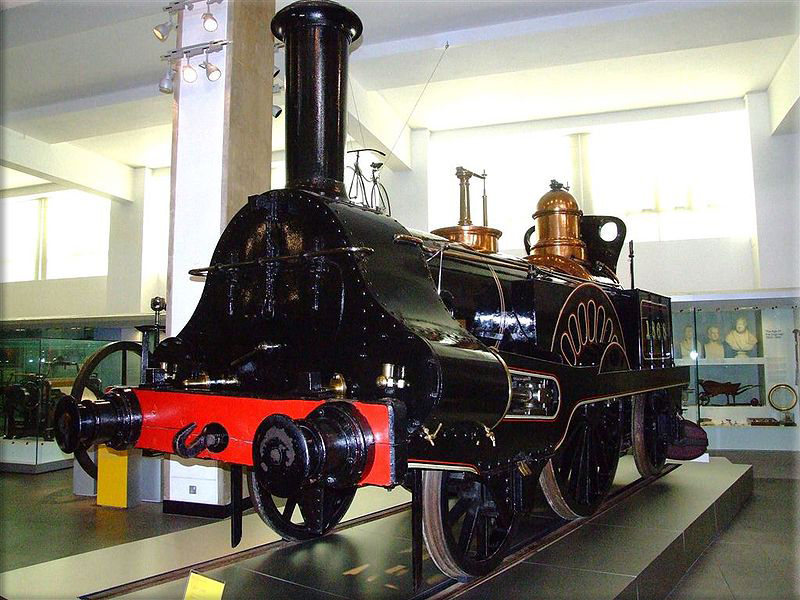
Grand Junction Railway, the world's first long-distance railway, opens between Birmingham and Liverpool.
Wikipedia Grand Junction Railway, Columbine.
July 4th, 1862

1862 - Lewis Carroll, tells Alice Liddell a story that would grow into Alice's Adventures in Wonderland and its sequels.
1865 - Lewis Carrol's, Alice's Adventures in Wonderland is published.
Wikipedia Alice's Adventures in Wonderland; Jessie Willcox Smith's illustration of Alice surrounded by the characters of Wonderland. (1923) #9679; Alice in Wonderland Vintage illustration - "You're nothing but a pack of cards!".
July 4th, 1863
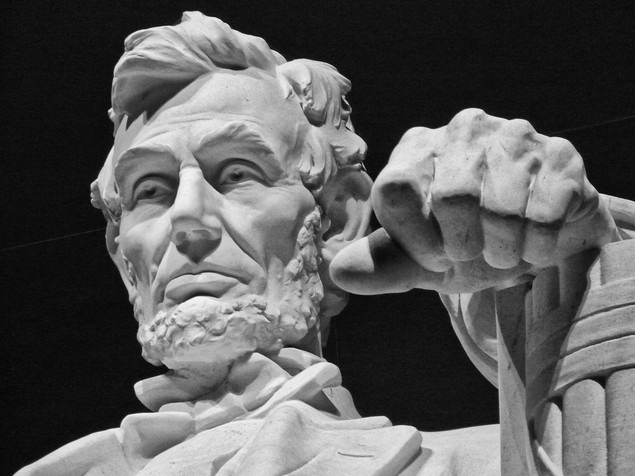
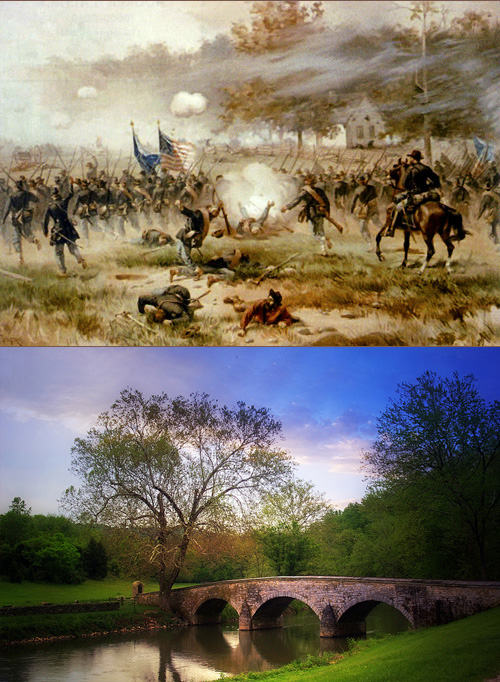
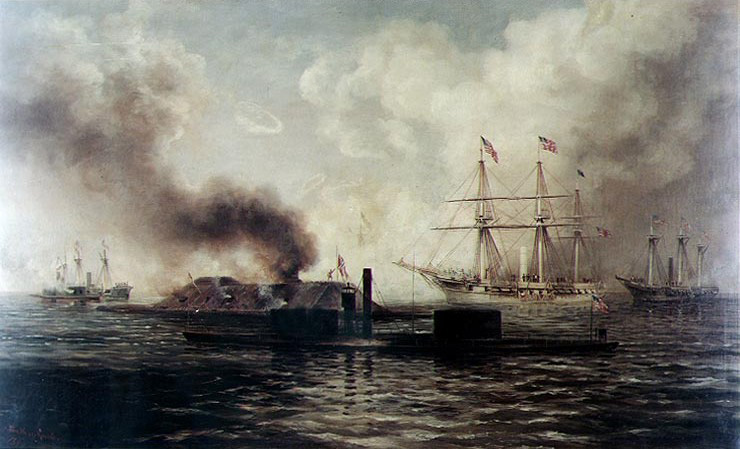
American Civil War:
1863 - Siege of Vicksburg: Vicksburg, Mississippi surrenders to Ulysses S. Grant after 47 days of siege. 150 miles up the Mississippi River, a Confederate Army is repulsed at the Battle of Helena, Arkansas.
1863 - Battle of Gettysburg Retreat; The Army of Northern Virginia withdraws from the battlefield after its loss at the Battle of Gettysburg, signalling an end to the Southern invasion of the North.
Wikipedia Image: ● Lincoln Memorial; an American national monument built to honor the 16th President of the United States, Abraham Lincoln - located on the National Mall in Washington, D.C. across from the Washington Monument.
● The northern army led by George McClellan and the southern army led by Robert E. Lee met at Antietam Creek, Maryland in September, 1862. It was a bloody battle where 13,000 Confederates and 12,000 Union troops died in just one day. McClellan had hesitated to attack before the battle thus letting the southern troops regroup. Also, he had saved reserves and refused to use them at the end of the battle thinking that Lee was holding reserves for a counterattack, even though those reserves didn't exist. The Union victory stopped Lee's northward advance and was a turning point in the war.
● Battle of Antietam / Stone Bridge at Antietam Battlefield - Sharpsburg, Maryland
● Battle of Mobile Bay (1890) by Xanthus Russell Smith.
● Although photography was still in its infancy, war correspondents produced thousands of images, bringing the harsh realities of the frontlines to those on the home front in a new and visceral way. The Atlantic.
July 4th, 1879
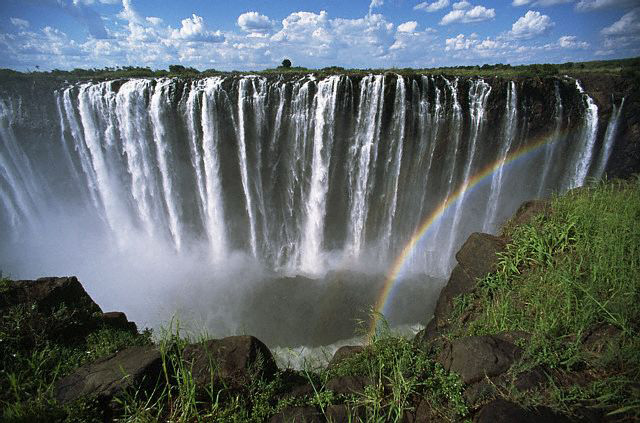

Anglo-Zulu War:
1879 - The Zululand capital of Ulundi is captured by British troops and burnt to the ground, thus, ending the war and forcing King Cetshwayo to flee.
Wikipedia Photo: Zambia Victoria Falls, Zimbabwe;
A n'anga (or faith healer) of the majority (70%) Shona people, holding a kudu horn trumpet; Matabele and Zulu warriors, traditions continue to this day in ceremonies for special events.
July 4th, 1886
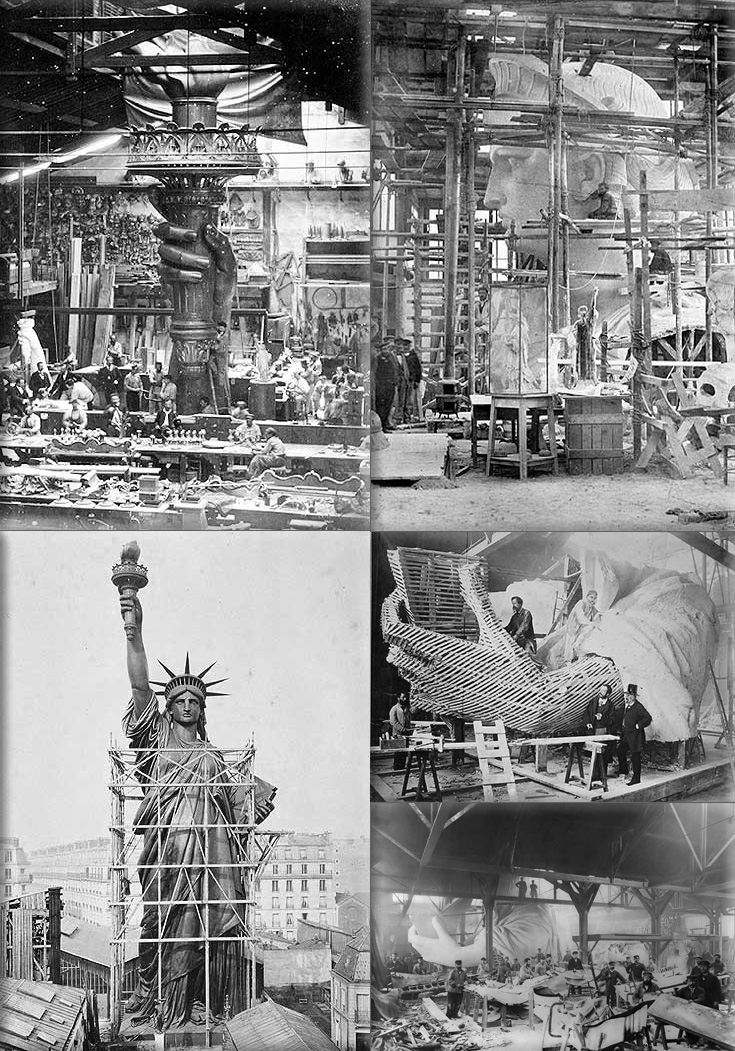
Statue of Liberty: The people of France offer the Statue of Liberty to the people of the United States.
Wikipedia Photo: Assembling the Statue of Liberty; originally known as "Liberty Enlightening the World", given to the United States by France to celebrate their alliance during the Revolutionary War. Built in Paris from the design of Frederic August Bartholdi; Bartholdi's Workshop in Paris; The statue of liberty in Paris before being transported to the United States in pieces; Joseph Pulitzer criticised the rich for not donating money, which put the project underway. credit Building The Statue Of Liberty (Photos).
July 4th, 1910

African-American boxer Jack Johnson knocks out white boxer Jim Jeffries in a heavyweight boxing match sparking race riots across the United States.
Wikipedia.org / PBS Photo: Jack Johnson was the first African American to hold the world heavyweight.
July 4th, 1934
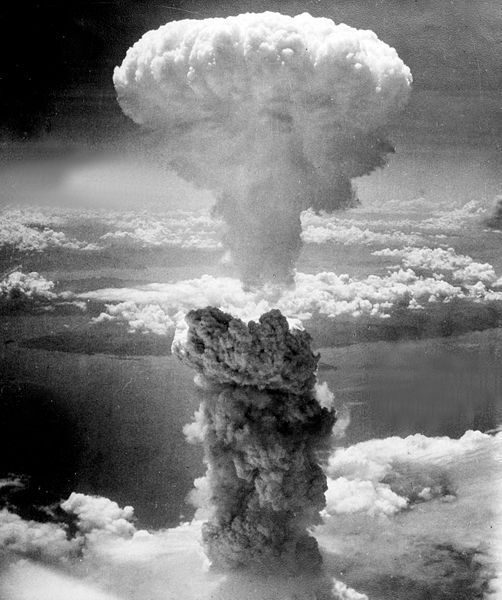
Leo Szilard patents the chain-reaction design for the atomic bomb.
Wikipedia Photo: The mushroom cloud of the atomic bombing of Nagasaki, Japan on August 9, 1945 rose some 18 kilometers (11 mi) above the bomb's hypocenter.
July 4th, 1939

Lou Gehrig, recently diagnosed with Amyotrophic lateral sclerosis, tells a crowd at Yankee Stadium that he considers himself "The luckiest man on the face of the earth" as he announces his retirement from major league baseball.
Wikipedia Photos: “Luckiest man on the face of the earth” Lou Gehrig, New York Yankees / Lou Gehrig with Babe Ruth
July 4th, 1941
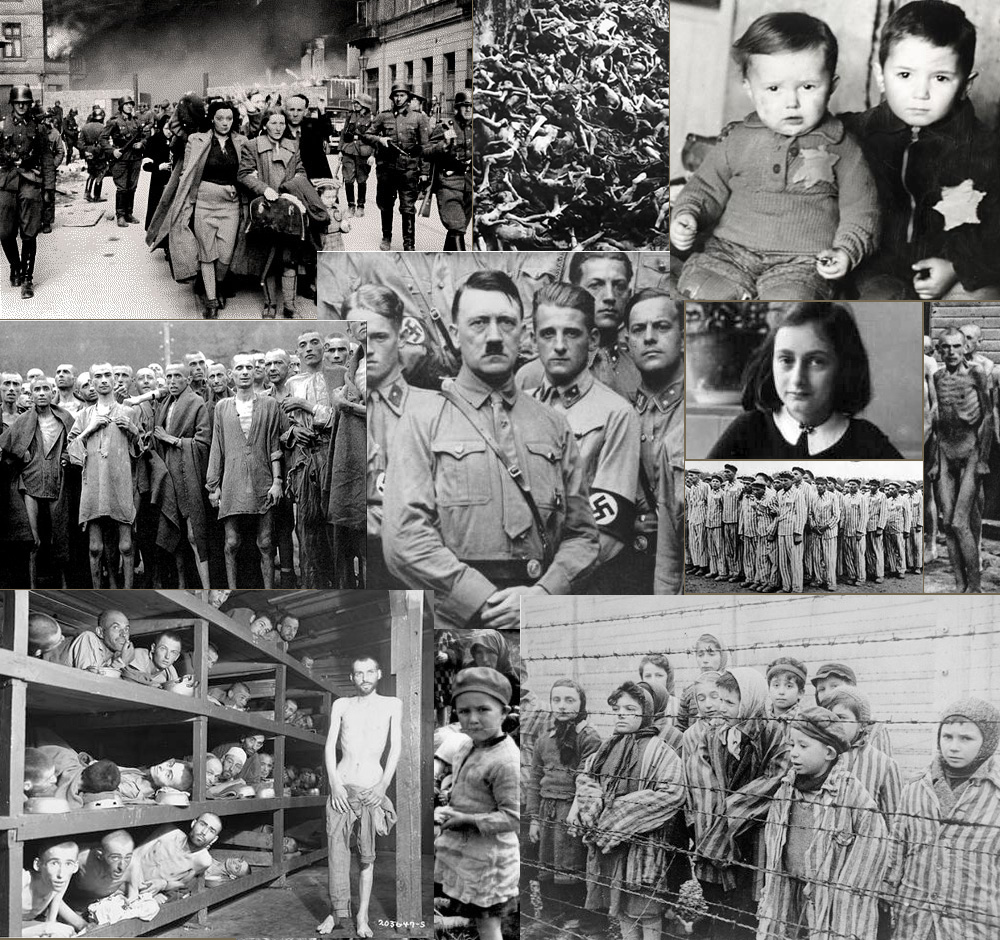
World War II: Holocaust;
1941 - Nazi Germans massacre Polish scientists and writers in the captured Ukrainian city of Lviv.
1987 - Gestapo chief Klaus Barbie (aka the "Butcher of Lyon") is convicted of crimes against humanity and is sentenced to life imprisonment.
Wikipedia Photo: World War II, The Holocaust. Sources: United States Holocaust Memorial Museum USHMM, History 1900s, Internet Masters of Education Technology IMET, Techno Friends, Veterans Today, Concern.
July 4th, 1943
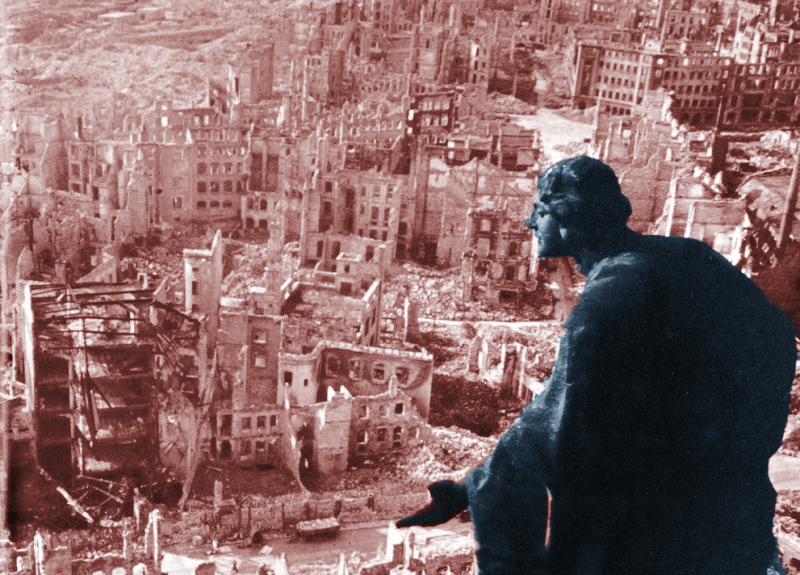

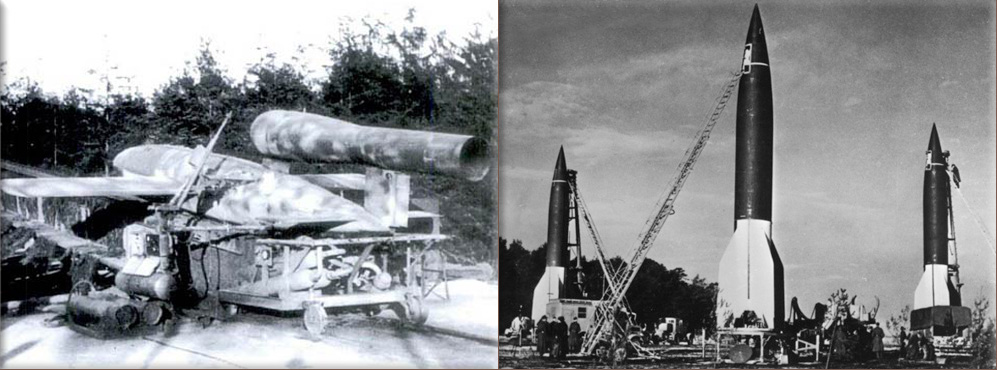
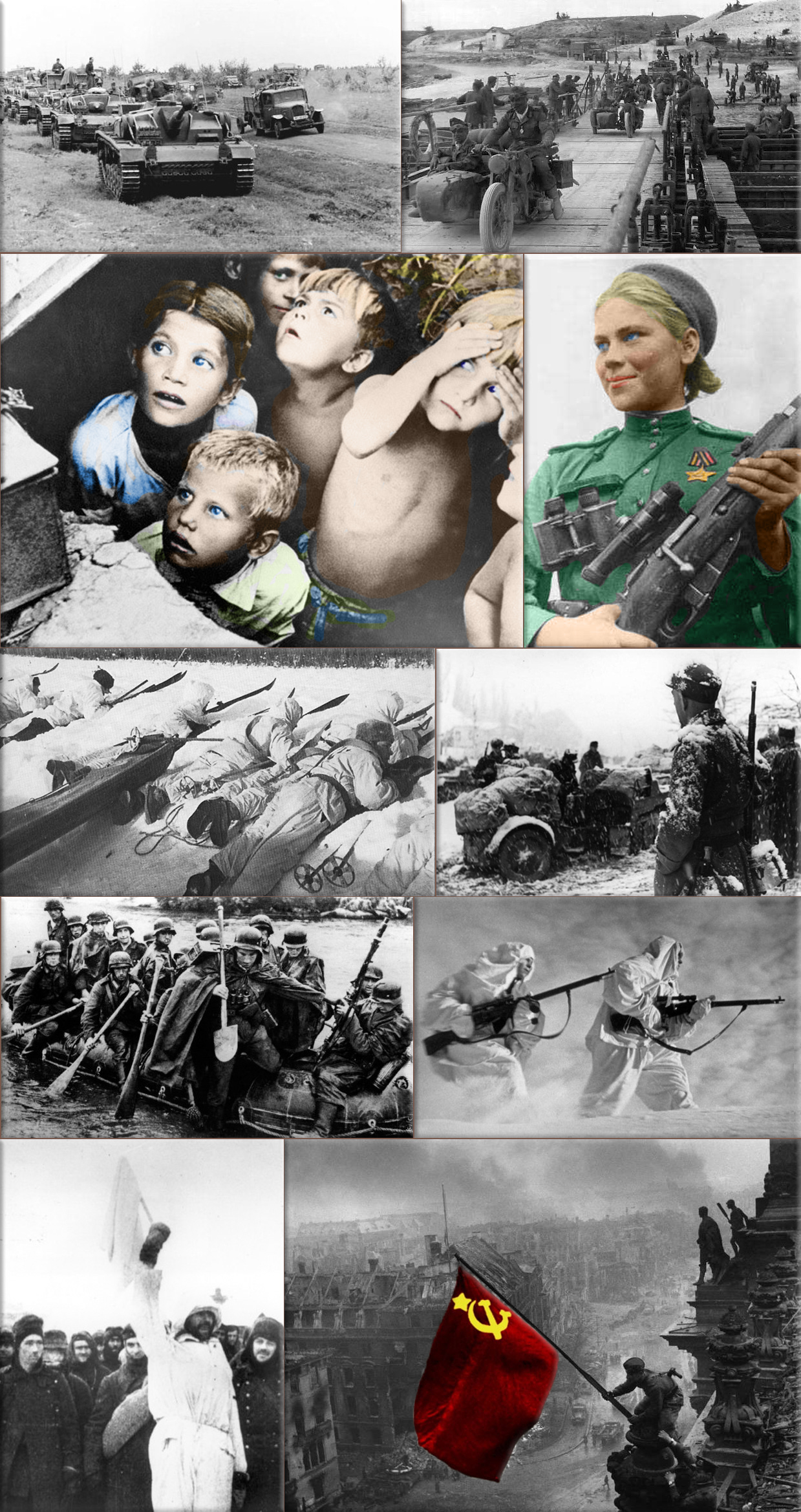
World War II:
1943 - Battle of Kursk: the largest full-scale battle in history and the world's largest tank battle at Prokhorovka village.
Wikipedia Photo: Bombing of Dresden in World War II; August Schreitmüller's sculpture 'Goodness' surveys Dresden after a firestorm started by Allied bombers in 1945.
USS Bunker Hill was hit by kamikazes piloted by Ensign Kiyoshi Ogawa and another airman on 11 May 1945. 389 personnel were killed or missing from a crew of 2,600; Ensign Kiyoshi Ogawa, who flew his aircraft into the USS Bunker Hill during a Kamikaze mission on 11 May 1945; Kamikaze Missions - Lt Yoshinori Yamaguchi's Yokosuka D4Y3 (Type 33 Suisei) "Judy" in a suicide dive against USS Essex. The dive brakes are extended and the non-self-sealing port wing tank is trailing fuel vapor and/or smoke 25 November 1944.
German V1 flying-bomb and V2 Rockets - Preparations for a Salvo Launch of V-2 Rockets in the Heidelager near Blizna (Poland) (1944), credit German History in Documents and Images GHDI.
Eastern Front (World War II); Germans race towards Stalingrad. August 1942; Soviet children during a German air raid in the first days of the war, June 1941, by RIA Novosti archive; Soviet sniper Roza Shanina in 1944. About 400,000 Soviet women served in front-line duty units Caucasus Mountains, winter 1942/43; Finnish ski patrol: the invisible enemy of the Soviet Army with an unlimited supply of skis; Men of the German Engineers Corps cross a river which is swollen after the first autumn rains, to strengthen bridges linking the German positions on the central front in Russia. by Keystone / Getty Images. October 1942; Russian snipers fighting on the Leningrad front during a blizzard. Photo by Hulton Archive / Getty Images, 1943; German soldiers surrendering to the Russians in Stalingrad, the soldier holding the white flag of surrender is dressed in white so that there could be no doubt of his intentions, a Russian soldier is on the right of the photograph. by Keystone / Getty Images, January 1943.
July 4th, 1951
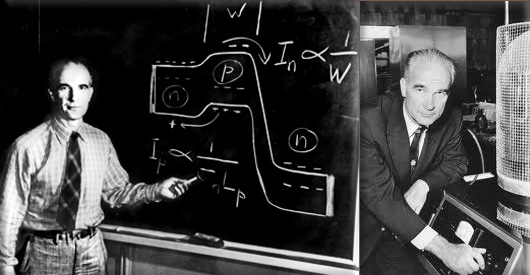
William Shockley invents the junction transistor .
Wikipedia Photo: The Wall Street Journal William Shockley in his lab in Mountain View, Calif., in 1956, the year he won the Nobel Prize in physics for helping to invent the transistor.
July 4th, 1976

Israeli commandos raid Entebbe airport in Uganda, rescuing all but four of the passengers and crew of an Air France jetliner seized by Palestinian terrorists.
Wikipedia Photo: Israeli commandos raid Entebbe airport in Uganda
July 4th, 1997
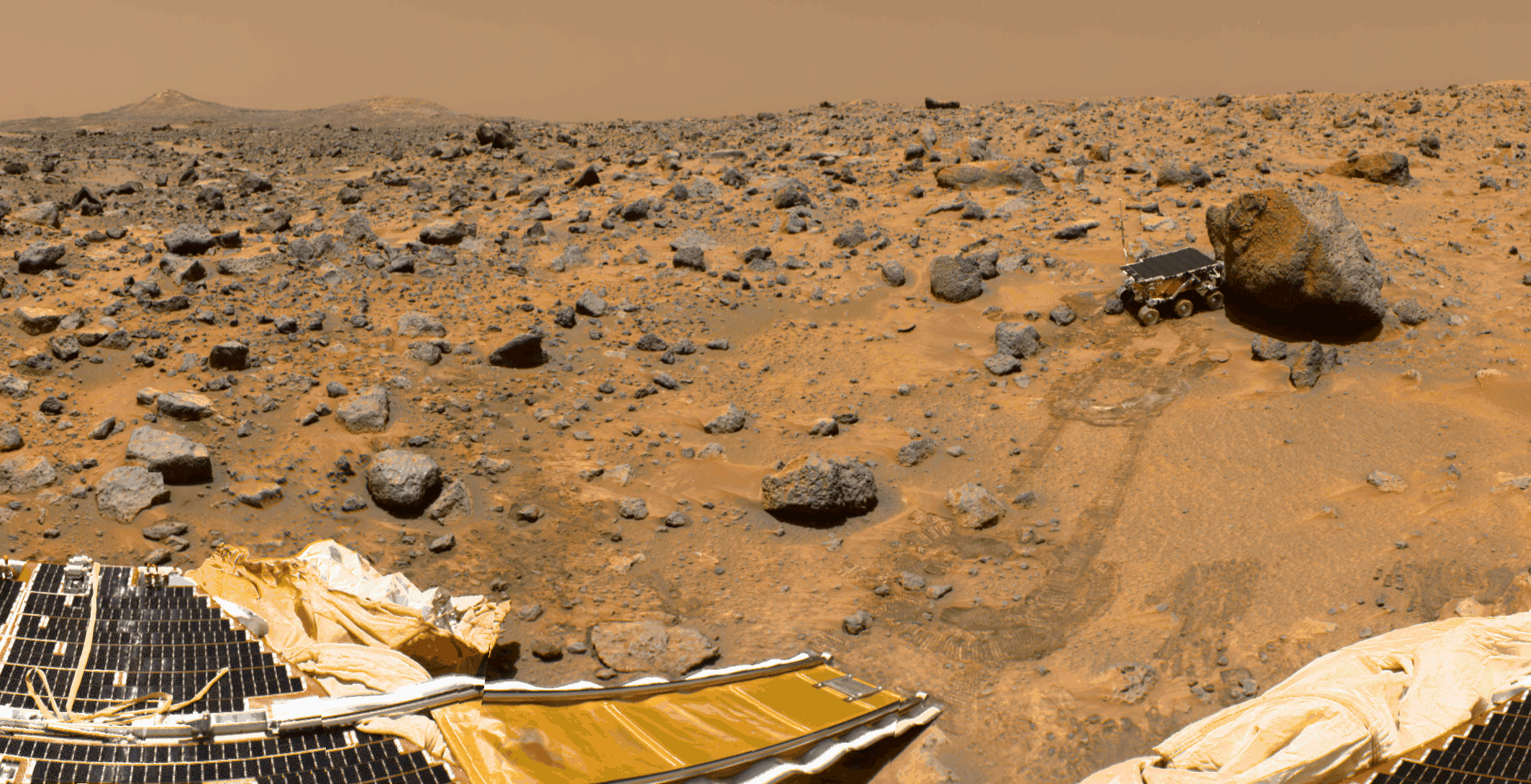
NASA's Pathfinder space probe lands on the surface of Mars.
Wikipedia Photo: NASA's Pathfinder, credit NASA, Peter Smith.
July 4th, 2004

One World Trade Center: The cornerstone of the Freedom Tower is laid on the site of the World Trade Center in New York City.
Wikipedia Photo: One World Trade Center; A full moon, as seen from West Orange, New Jersey, rises over the skyline of Lower Manhattan and One World Trade Center in New York, on May 6, 2012. (Reuters/Gary Hershorn), credit The Atlantic.
July 4th, 2012
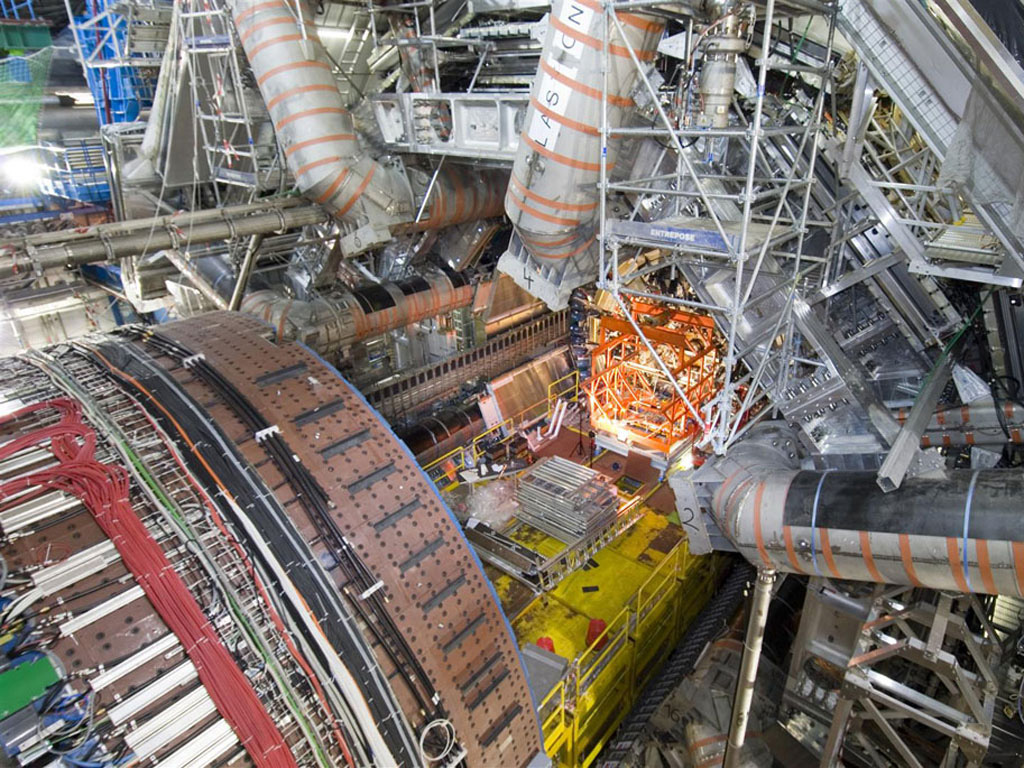
The discovery of particles consistent with the Higgs boson at the Large Hadron Collider is announced at CERN.
Wikipedia Photo: CERN is the world's largest particle physics laboratory
